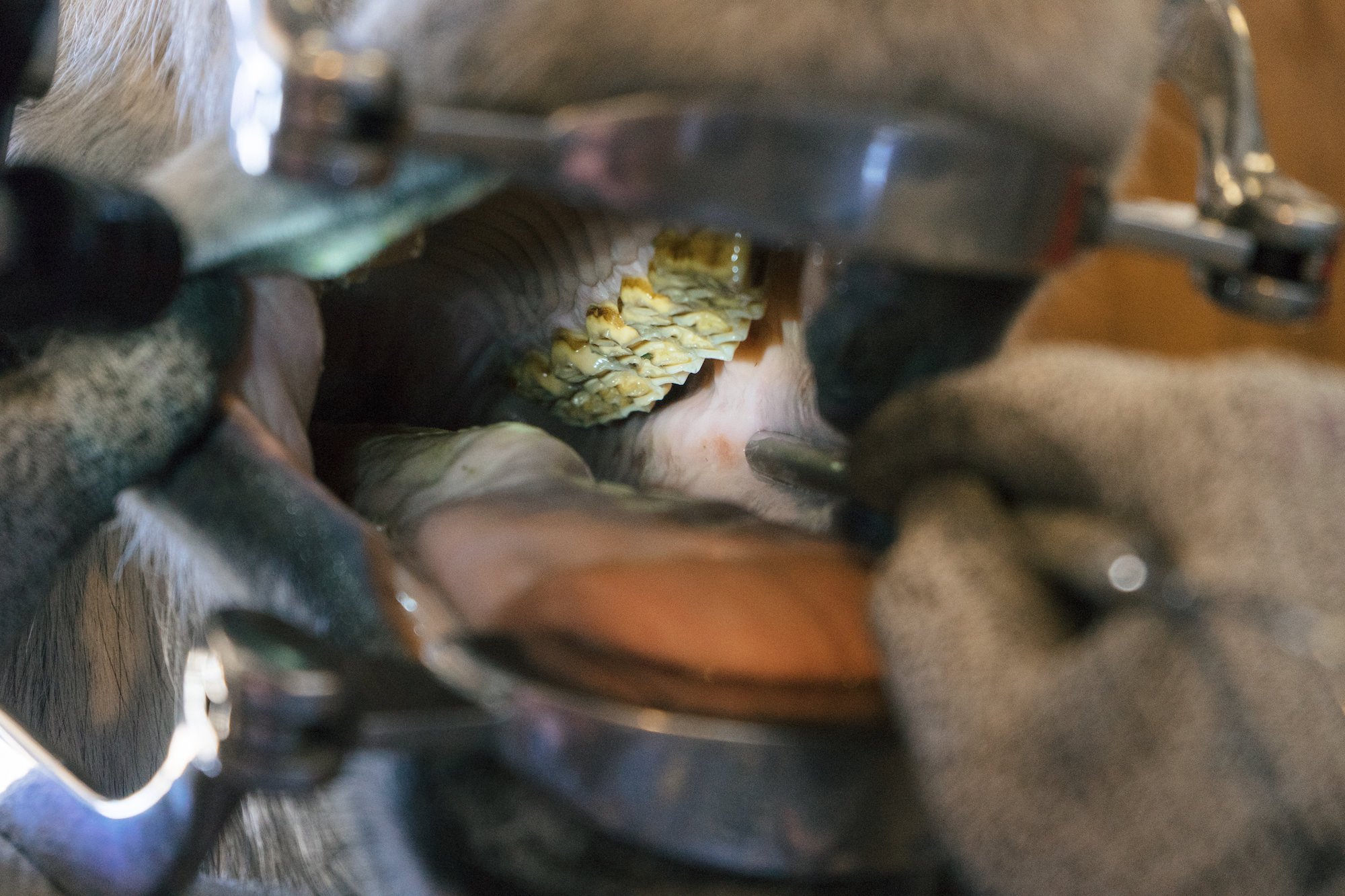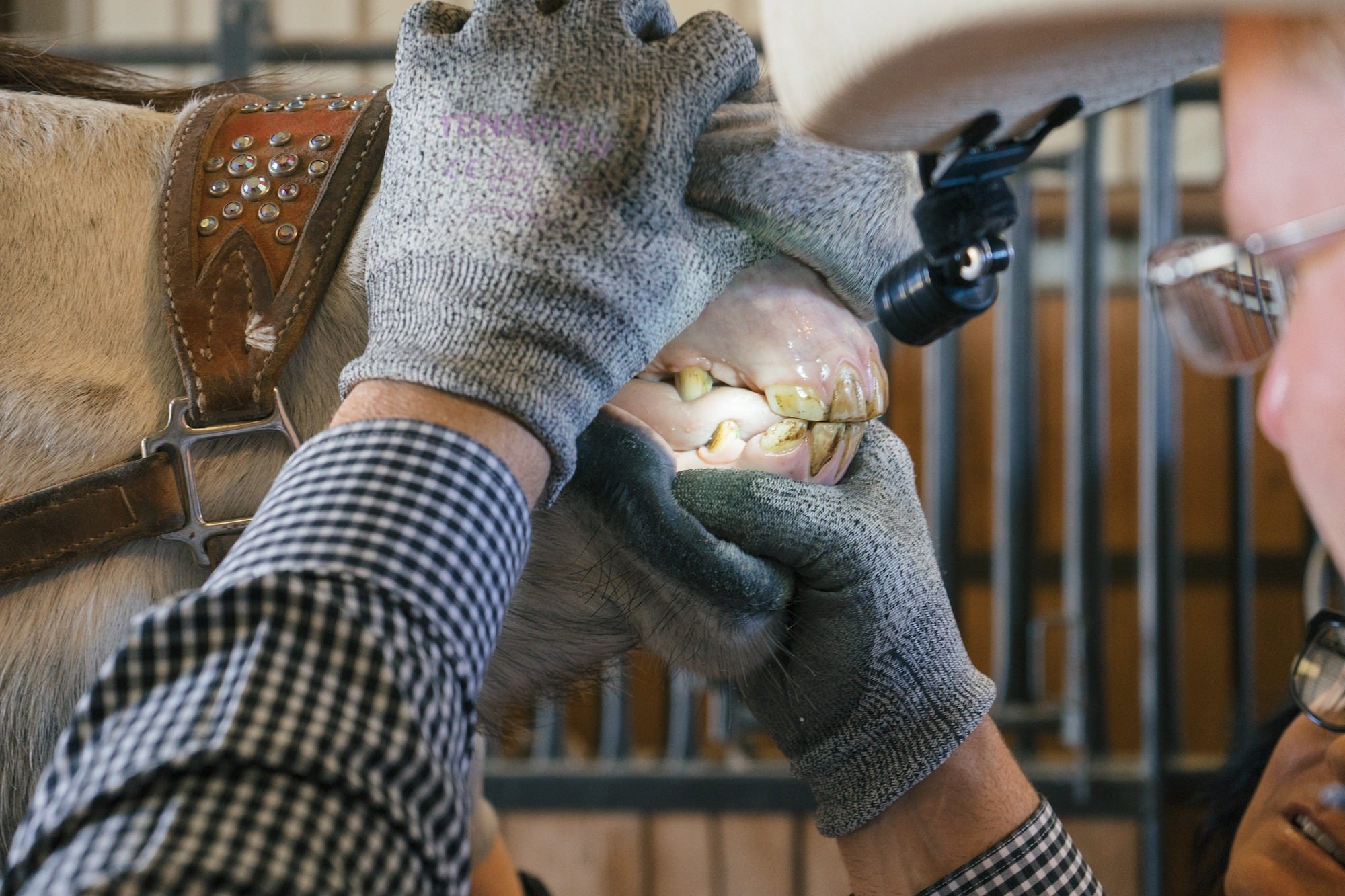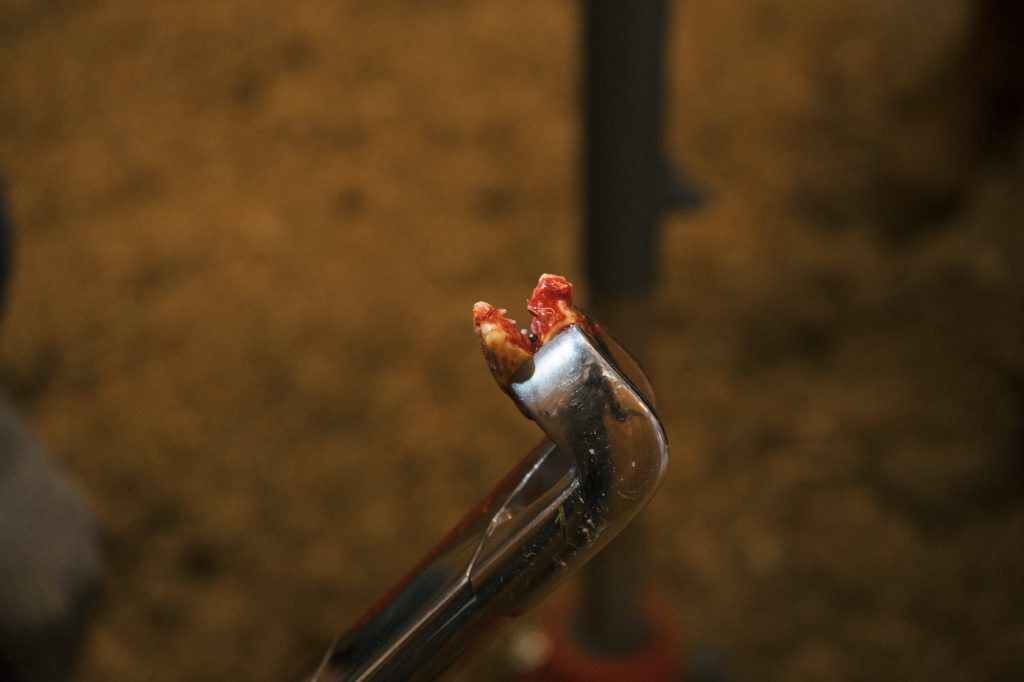PHOTO GALLERY

Dr. Johnson will perform a brief physical exam and administer sedation.

A little disinfectant/antiseptic mouthwash to clean out any leftover breakfast or snacks.

The speculum allows for a thorough oral exam as well as allowing the doctor enough room to work even in the furthest parts of the horse’s mouth. It is adjustable to your horse’s head and mouth.

We have a few different speculums designed to compliment your horse’s head, mouth and oral situation. We like our patients to have exactly what they need for the best care!!

Sedated, comfortable and ready for his dental date with Dr. Johnson!

Dr. Johnson performs a complete oral exam, assessing the entire mouth.

Here we can see sharp edges on the teeth along the cheek and a small ulcer beginning to form in the cheek because of them.

Another small ulcer showing in the mirror. This ulcer is located in the back of the mouth and would be very hard to find and address without the aid of the speculum.

Cheek ulcer caused by sharp points

This horse has a large periodontal pocket that is causing feed to pack in between his teeth. Ouch! Thank goodness Dr. Johnson is able to peek in the way back of his mouth!

Dr. Johnson uses a high quality diamond-plated disc to address sharp points. This disc is specially designed to take down sharp edges on teeth, but will not hurt soft tissue if it comes in contact with the cheek, palate or tongue.

Doing just fine and relaxing during his procedure.

Before and after. The left side presents with sharp enamel points that cut into the cheek and cause ulcers. The right side has been smoothed down and points have been eliminated. Notice, however, the teeth have not been completely flattened on the occlusal surface (the surface of the tooth that comes in contact when your horse bites down). This is because the surface of the tooth should not be flat. Horses need those ridges in order to grind down their food properly.

After finishing the float, Dr. Johnson will perform an occlusal adjustment and evaluate the alignment.

If they are present, he will address canines. Because they have no other teeth to wear on, canines can develop tartar buildup that causes bacteria to invade the gumline. If this is the case, Dr. Johnson will scale away this tartar buildup so the gums can return to their normal, healthy state.

Another rinse to wash out all the dental dust and tartar.

All finished……

And everyone is happy!!
SPECIAL CASES
Here we can can see a fractured tooth in the back of the mouth. Feed has been packing around the dead tooth, causing discomfort and stressing the ligaments of the teeth around and below it.

Dr. Johnson easily extracted the fractured tooth and properly adjusted the surrounding teeth so the area could heal and the ligaments would no longer be under pressure. Eating and chewing definitely became much easier and more comfortable after this extraction!

Thank you Dr. Johnson!! I feel much better!!

This horse had a severe fracture of the second upper incisor. You can see the abscess has rotted the tooth all the way to the outside. This tooth is dead. Without extraction, the infection would have spread to the surrounding teeth, infecting and possibly killing them also. Dr. Johnson extracted this tooth, and with proper after care and antibiotics, this patient is doing just fine.

Here is a fractured molar. You can see the large amount of feed and debris packed in the fractured area. Ouch!

This horse had a severe fracture of the second upper incisor. You can see the abscess has rotted the tooth all the way to the outside. This tooth is dead. Without extraction, the infection would have spread to the surrounding teeth, infecting and possibly killing them also. Dr. Johnson extracted this tooth, and with proper after care and antibiotics, this patient is doing just fine.

